leopard tortoise for sale best 1 exotic pets for sale
$199.00
Leopard Tortoise for Sale, Best 1 Exotic pets for sale, Buy Tortoise , Tortoise for sale, exotic Tortoise for sale, cheetah cubs for sale, buy lion cubs
Leopard Tortoise: A Majestic Reptile for the Passionate Collector
The ‘‘leopard tortoise for sale“(Stigmochelys pardalis) is one of the most striking and popular species in the tortoise world. Known for its beautifully patterned shell and gentle demeanor, this species attracts reptile enthusiasts from around the globe. Whether you’re a seasoned tortoise keeper or a new enthusiast looking to add a unique reptile to your collection, the Leopard Tortoise is a fantastic option.
This article will delve into the care, habitat, and lifestyle of Leopard Tortoises, while also discussing where you can find Leopard Tortoises for sale, what their prices look like, and how to care for them as pets.
What is a Leopard Tortoise?
Leopard Tortoises are native to the savannas of Eastern and Southern Africa. They are the fourth-largest tortoise species in the world, capable of reaching up to 18 inches in length, though larger specimens can grow up to 24 inches. Despite their size, Leopard Tortoises are herbivorous and gentle in nature, making them ideal pets for those with ample space and the resources to care for a long-lived reptile.
Their name comes from their distinctive, high-domed carapace, which is marked with dark, leopard-like spots and patterns on a yellow or tan background. Each Leopard Tortoise has a unique pattern, which adds to their appeal for collectors and enthusiasts alike.
Leopard Tortoises are among the most popular tortoises in captivity due to their relatively easy care requirements and their ability to adapt to different environments. However, they require space, a specialized diet, and a commitment to long-term care, as they can live for up to 75 years or more when properly cared for.
For those considering a Leopard Tortoise, it’s important to do your research and be prepared for the unique needs of these magnificent reptiles.
Leopard Tortoise for Sale: What to Look For
When searching for a Leopard Tortoise for sale, it’s crucial to find a reputable breeder or seller. Whether you’re looking for an adult Leopard Tortoise or a baby Leopard Tortoise, buying from a reliable source ensures that you’re getting a healthy animal raised in proper conditions. The price of a Leopard Tortoise can vary greatly depending on the age, size, and overall health of the tortoise.
– *Leopard Tortoise Price*: The price of an adult Leopard Tortoise can range from $200 to $1,000 or more, depending on the tortoise’s size, age, and health.
– *Baby Leopard Tortoise Price*: For a baby Leopard Tortoise, prices usually start at around $150 and can go up to $400 or more. Baby tortoises require special care and attention, especially in their first few years, as they are more vulnerable than adults.
If you’re specifically searching for “Leopard Tortoise for sale near me,” it’s important to check local breeders or reptile expos in your area. Buying locally can reduce the stress of shipping on the tortoise and give you the chance to inspect the animal in person before purchasing.
Leopard Tortoise Care
Caring for a Leopard Tortoise involves creating an environment that mimics their natural habitat as closely as possible. This includes providing plenty of space, a varied diet, and suitable temperatures. Here’s a breakdown of essential Leopard Tortoise care tips:
1. Housing and Habitat
Leopard Tortoises need a spacious enclosure, whether kept indoors or outdoors. For baby Leopard Tortoises, a smaller enclosure will suffice, but as they grow, you’ll need to upgrade to accommodate their size. For an adult Leopard Tortoise, a minimum enclosure size of 8 feet by 8 feet is recommended, though more space is always better.
If you live in a warm climate, keeping your tortoise outdoors in a secure, predator-proof pen is ideal, as this allows them to enjoy natural sunlight and explore their surroundings. Indoors, you’ll need to provide UVB lighting, which is essential for their bone health and shell development.
2. Temperature and Lighting
Leopard Tortoises thrive in warm temperatures, mimicking the African savannas they come from. Daytime temperatures should be kept between 80°F and 90°F, with a basking area that reaches 95°F to 100°F. At night, temperatures can drop slightly but should remain above 70°F.
If you’re keeping your Leopard Tortoise indoors, a UVB lamp is crucial for replicating the sunlight they would receive in the wild. UVB lighting helps tortoises metabolize calcium and maintain a healthy shell, which is vital to their overall well-being.
3. Diet
Leopard Tortoises are herbivores and require a diet rich in fiber. In the wild, they graze on grasses and leafy plants, so it’s important to replicate this in captivity. A good diet for a Leopard Tortoise includes:
– Grasses (Bermuda grass, Timothy grass)
– Leafy greens (collard greens, dandelion greens, kale)
– Edible flowers (hibiscus, clover)
It’s essential to avoid feeding your tortoise fruits or high-protein foods, as these can lead to health issues like shell deformities or kidney problems. Additionally, offering a calcium supplement, such as a cuttlebone, is recommended to support shell growth and prevent metabolic bone disease.
4. Hydration and Humidity
Leopard Tortoises need access to fresh water at all times. A shallow water dish large enough for your tortoise to soak in is ideal, as Leopard Tortoises will often submerge themselves to stay hydrated and cool off. While they are native to arid regions, baby Leopard Tortoises need slightly higher humidity levels (around 60-70%) to prevent dehydration and aid in shell development.
Leopard Tortoise Behavior
Leopard Tortoises are generally docile and friendly creatures, though they can be shy, especially when young. With time and consistent handling, they can become more comfortable around humans. They are not aggressive and do not bite, making them a great option for reptile enthusiasts who prefer calmer animals.
Leopard Tortoises are also quite active during the day, and they enjoy exploring their environment. Providing them with plenty of space to roam and interesting things to explore will keep them mentally and physically stimulated.
Leopard Tortoise Lifespan
One of the most important things to consider before buying a Leopard Tortoise is its lifespan. Leopard Tortoises are incredibly long-lived, with an average lifespan of 50 to 75 years, though some can live even longer. This means that owning a Leopard Tortoise is a lifelong commitment, and prospective owners should be prepared to care for them for many decades.
Types of Leopard Tortoises
While the classic Leopard Tortoise is the most well-known, there are some variations that collectors may find intriguing. One such variety is the White Leopard Tortoise. These tortoises have a lighter, cream-colored shell with faint spots, making them stand out from the typical Leopard Tortoise.
– *White Leopard Tortoise *: These rare morphs are not as common as standard Leopard Tortoises, and they typically come at a higher price due to their rarity. If you’re searching for a White Leopard Tortoise, you may need to contact specialized breeders who work with these unique morphs.
Leopard Tortoise and Other Tortoises
For those interested in multiple species, it’s important to understand how Leopard Tortoises interact with other tortoise species. Generally, it’s best to avoid housing Leopard Tortoises with other species, especially smaller or more aggressive tortoises. While Leopard Tortoises are typically gentle, they are larger and may unintentionally injure smaller tortoises in the same enclosure.
African Leopard Tortoise for Sale
Leopard Tortoises are often referred to as African Leopard Tortoises because they are native to the African continent. This helps distinguish them from other tortoise species. If you’re searching for an “African Leopard Tortoise for sale,” you’re likely looking for the same species we’ve been discussing. Just be sure to clarify with the seller to ensure you’re getting the correct species, as different countries and breeders may use different naming conventions.
Breeding Leopard Tortoises
Breeding Leopard Tortoises in captivity can be rewarding but challenging. Males tend to be smaller than females, and once a pair is introduced, it can take several years for them to reach sexual maturity and successfully breed. The female Leopard Tortoise will lay her eggs in a shallow burrow, and incubation takes around 90 to 120 days, depending on the temperature.
One thing to note is that Leopard Tortoise eggs are temperature-dependent when it comes to determining the sex of the hatchlings. Higher incubation temperatures generally produce females, while lower temperatures produce males.
Where to Find Leopard Tortoises for Sale
Leopard Tortoises can be found for sale through various sources, including reptile expos, online breeders, and specialized pet stores. If you’re looking for a “Leopard Tortoise for sale near me,” attending a local reptile show or expo can be a great way to find breeders in your area. These events often feature a wide variety of tortoises, including baby Leopard Tortoises.
For those searching online, many reputable breeders offer Leopard Tortoises for sale, and some even specialize in rarer morphs like the White Leopard Tortoise. When purchasing online, be sure to research the breeder and ask for photos of the tortoise, information on its diet and care, and any available health certifications.
Conclusion
The Leopard Tortoise is an extraordinary species that can make a wonderful pet for dedicated reptile enthusiasts. Their striking appearance, gentle nature, and long lifespan make them a favorite among tortoise keepers. However, owning a Leopard Tortoise is a long-term commitment, and potential owners should be prepared to provide the space, diet, and care necessary for this magnificent animal to thrive.
Whether you’re looking for a baby Leopard Tortoise to start your journey or a fully grown adult to add to your collection, it’s important to source your tortoise from reputable breeders and sellers. Understanding the Leopard Tortoise price and the care involved will help you make an informed decision and ensure that your new pet lives a healthy, happy life.
Key Takeaways
– *Leopard Tortoise Price*: Leopard Tortoises can vary in price depending on age, size, and rarity. Expect to pay anywhere from $150 for a baby Leopard Tortoise to over $1,000 for larger, older specimens.
– *Baby Leopard Tortoise Price*: Baby Leopard Tortoises typically cost between $150 and $400, though they require more attentive care in their early years.
– *Leopard Tortoise*: When looking for a Leopard Tortoise, ensure that you are buying from a reputable breeder who can provide details on the tortoise’s health, care, and lineage.
– *White Leopard Tortoise for Sale*: White Leopard Tortoises are a rarer morph and tend to be more expensive due to their unique coloration. Breeders specializing in these morphs may be harder to find, but they are available for those willing to search.
– *Leopard Tortoise Near Me*: Attending local reptile expos or shows is a great way to find Leopard Tortoises for sale in your area, and it allows you to inspect the animal in person before purchasing.
– *African Leopard Tortoise for Sale*: The term “African Leopard Tortoise” refers to the same species and is a commonly used name. Whether you’re buying locally or online, ensure that you’re getting the correct species.
For anyone interested in these gentle giants, Leopard Tortoises can provide years of enjoyment and companionship. By providing the right environment, diet, and care, your Leopard Tortoise will reward you with its beauty and calm presence, making it an unforgettable addition to your home.
If you’re ready to bring a Leopard Tortoise into your life, be sure to do your research, find a reputable source, and be prepared for the rewarding experience of caring for one of nature’s most remarkable reptiles.
Be the first to review “leopard tortoise for sale best 1 exotic pets for sale” Cancel reply
Related products
Uncategorized
Uncategorized




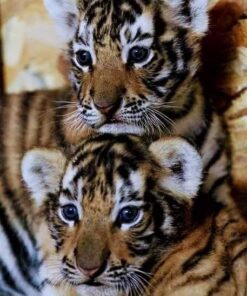

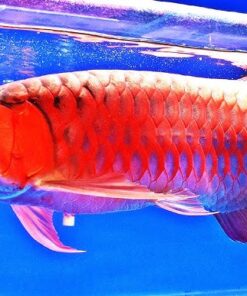


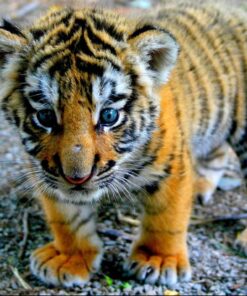

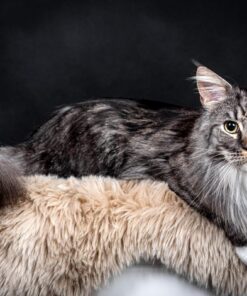

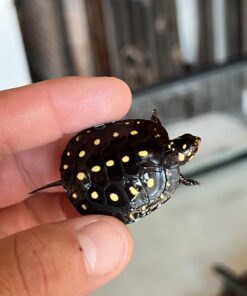
Reviews
There are no reviews yet.